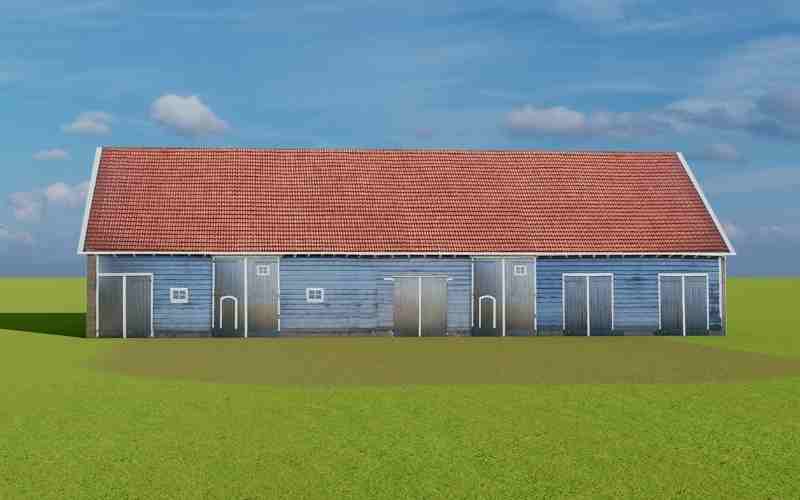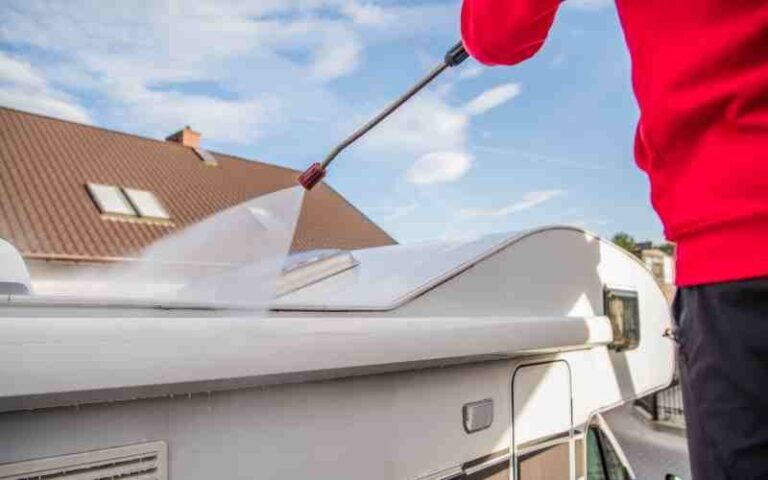Installing your roof felt can be somewhat easy though technical. Technical in such a way that every procedure requires proper execution.
You ought to always have your insurance against water leaks and several damages. But quite often, roof technicians and homeowners suggest various methods of laying roof felts.
Well, let’s see the ideal one.
You should never install your felt vertically. Installing roofing felt underlayment vertically may enhance water leakage and damage. In the case of an apex roof, begin laying from the base and lay the top felt from a horizontal position. From here, the felt should overlap themselves.
Ready for a Roofing Quiz?
Can Roof Felt Be Laid Vertically?

Even though you can, don’t lay felt tar paper vertically, as it may be so disadvantageous. You’ll be prone to water damage.
Also, you would defeat the reason for the roof underlayment installation.
Instead, when laying, allow the asphalt-saturated felt to intersect themselves; the overlap between two consecutive rows of asphalt-saturated paper should be about 10cm(4 inches).
Though you may see some technicians or homeowners laying theirs vertically, it’s not so ideal.
Manufacturers produce roof felts for proper gravity fall of water; avoidance of water escapes into seams.
Water will find an opening if you lay yours vertically though I doubt any water-escape situations in horizontal laying.
Your roof may be somewhat high, and laying each row till you reach the top could be stressful. But even at that, you should still try your possible best to finish it up horizontally.
So even though vertical roof underlayment installation could be straightforward and time-managing, I still advise you to go for the horizontal.
In the situations of apex roofs, from the base of any side of the top, roll the first covering of felt tar paper out. Then, you can begin rolling from the bottom-left or bottom-right.
Starting from any side means nothing. There’s no implication. Near the roof’s bottom edge, seemingly 10 feet or so, roll the tar paper some lengths away from your current position.
Remember to hang the felt’s bottom edge beyond the eave. The eave is that roof section that extends to the building’s wall.
Always ensure to properly spread out the tar paper when rolling it to ascertain it is flat and with no bubbles. Roof underlayment installation should not be done by installing your felt vertically.
The sole purpose of roofing paper is to provide secondary protection before and after installing the shingles(roof finish).
Section R905, article R905.2.7 of the International Residential Code states that ‘underlays should be applied shingle fashion, parallel to and starting from the eaves.’
Though the correct method of installing underlay is laying it horizontal, rare cases exist where applying your asphalt-saturated felt vertically is better.
For instance, steeply pitched dormer roofs. Besides these rare scenarios, place your felt underlay horizontally.
Which Way Should Roofing Felt Be Laid?
Start laying the roof felt from your roof’s bottom; roll it out at 180 degrees to the edge. Also, nail the first row of roof underlay to the wood decking.
Nail it to avoid ripping and tearing scenarios, especially in rare wood expansion and contraction situations during varying temperatures.
Starting from the bottom edge and gradually moving up sheds any moisture which has escaped the shingles. The water will run off the roof felt; it won’t go beneath it.
Lay the roofing felt in a manner that the subsequent rows overlap themselves.
After rolling your first row of asphalt-saturated paper, you ought to row the next one in a direction opposite to the first or previous. Don’t get confused.
What I mean is, let’s say you’ve rolled the first from the west to east direction. The second rolling should be from the east to the west direction.
Note that it’s not only applicable to the first and second rows. It applies to every row. Don’t row two immediate rows in the same direction.
Instead, continue laying them in this manner until you’re near the roof’s peak.
When you get near the top, attach a new felt row. This new felt row will aid the overlapping of your roof’s ridge by close to 0.30m.
After that, do the same thing to the other side of the top.
You may choose to nail the roof felt as you lay it or do it afterward though I advise you to fix it. Don’t forget to space each nail along the edge close to the roof’s peak with a 30-36 inches gap.
Space each row with a twelve-inch gap along the roof’s bottom edge.
On the same note, use roofing mastic to enfold and protect all nail noodles. Shielding nail heads in roofing mastic will aid durability in the roofing.
Therefore, you ought to apply it, especially when the felt is of more significance than just temporary waterproofing.
It would be best to use caulking guns in applying the roofing mastic. Get one from Amazon. Also, it is essential that you note some things.
Applying tar before roof underlayment installation isn’t so necessary. It’s dependent upon your needs.
You can easily sand and prime the roof decking; stick down the roof felt with bitumen paint. Then lay another row of asphalt-saturated paper with bitumen paint again.
You wouldn’t even need clout nails.
Yes, that’s how you’ll find roof felt installation on flat roofs. You’ll hardly if not use nails. It’s usually glued down.
Before laying your felt underlayment, ensure that the roof decking is dry and dirt-free. Clear any debris or piece of used tar paper away.
This clean-up process is very significant to the installation of your felt paper.
Note that you’ll need two or more persons to assist you in straightening the felt paper during the installation. Similarly, if you intend to use nails, consult your user manual.
Also, be sure of the recommended ones from your manufacturer, if any.
You should likewise replace all rotten wood decking. Make sure that the felt underlayment always lies flat. It should be smooth.
Unbalanced wrinkles and strips can give way to mold, dust, and moisture build-up.
Does It Matter Which Side Of The Roofing Felt Goes Down?
It is better to know the right side of the roofing felt. In laying rows of roofing felt, face the non-shiny surface down.
You’ll probably notice two different sides if you look carefully at your asphalt-saturated paper.
One of the sides is gentle and smooth.
This action of facing the non-shiny side of your roof felt down and the shiny side upward promotes the waterproof nature of the felt.
For proper roof underlayment installation, lay the roof felt from the roof’s bottom edge to the top in the case of apex roofs.
In the case of flat roofs, there’s not much difference. Start laying from the low end up to the high end. Don’t forget to overlap each roof felt row by a minimum of about two inches.
Overlap of felt underlayment rows avoids water escape beneath it.
In some cases, it doesn’t even matter Which side goes down. Merely consider the side that will be easy to unroll. Should in case you want to place the other side down.
You could utilize a 40 lb felt if you wish the roof to last longer, at least even during little rainstorms.
Conclusion
Even though you may find some homeowners laying their roof felts vertically, it is best to lay them horizontally.
However, in rare cases that you should, let it be your producer’s recommendation. In any case of felt installation, ensure that the felt rows you have laid overlap themselves, with at least two inches.






